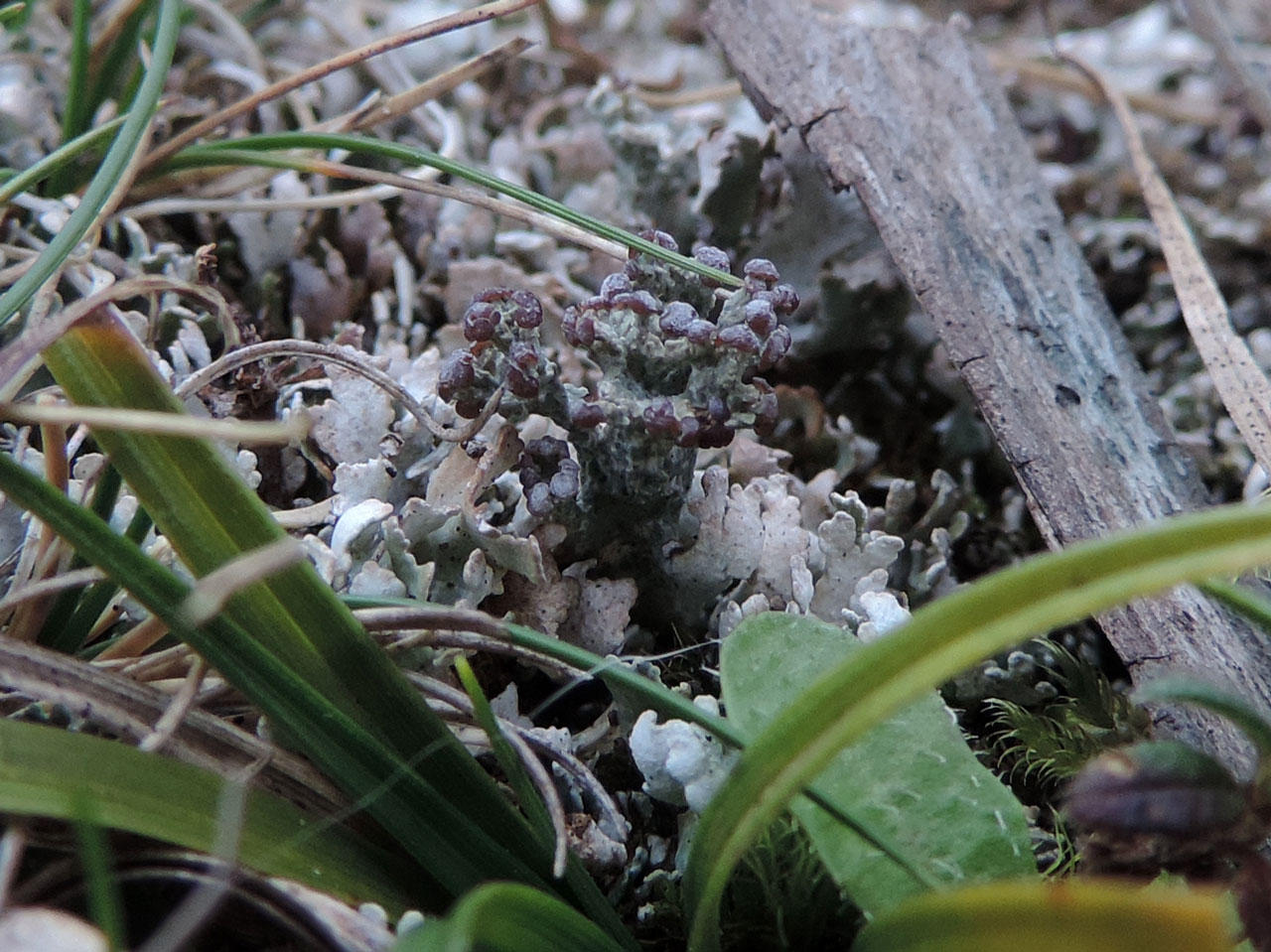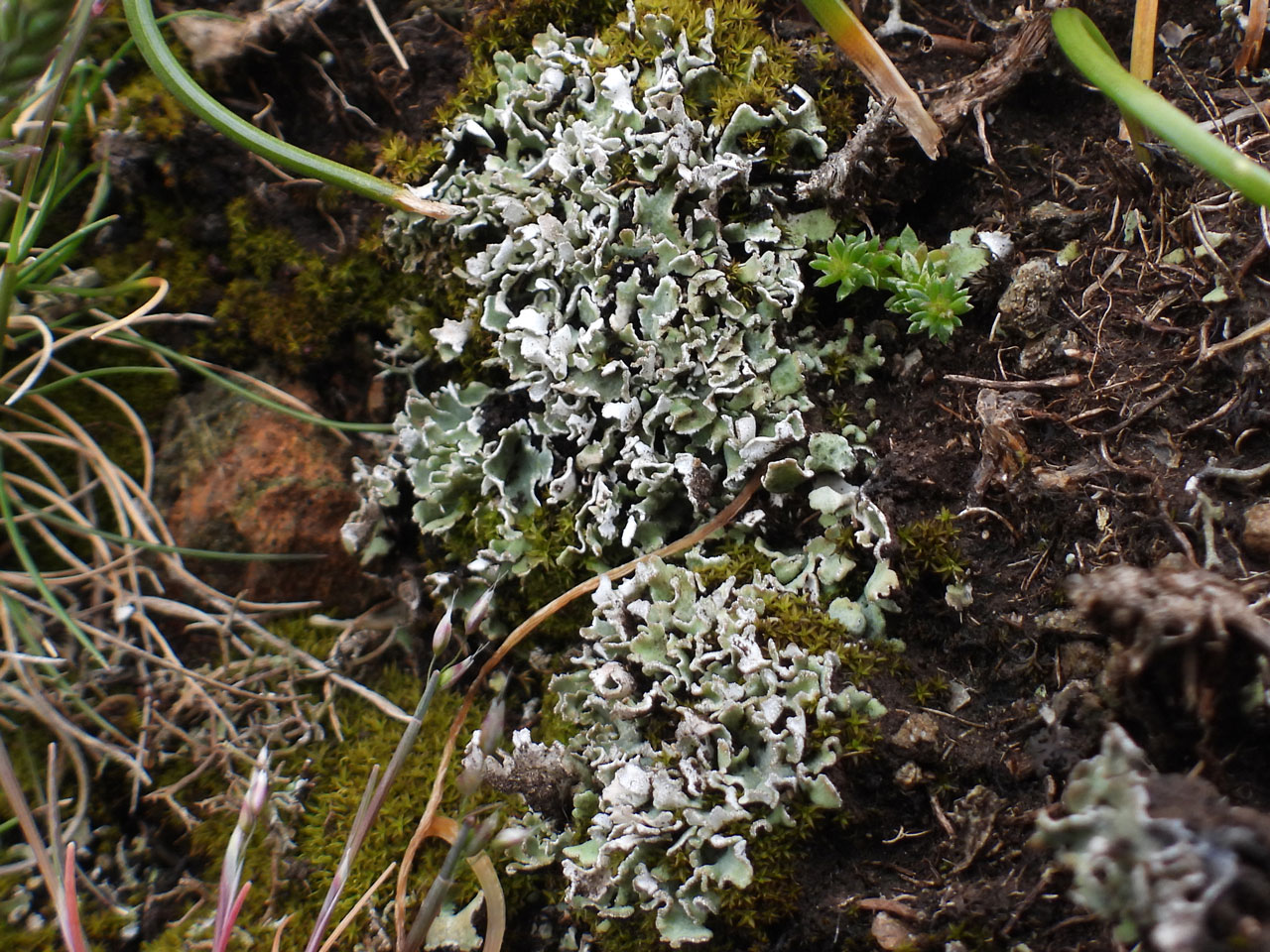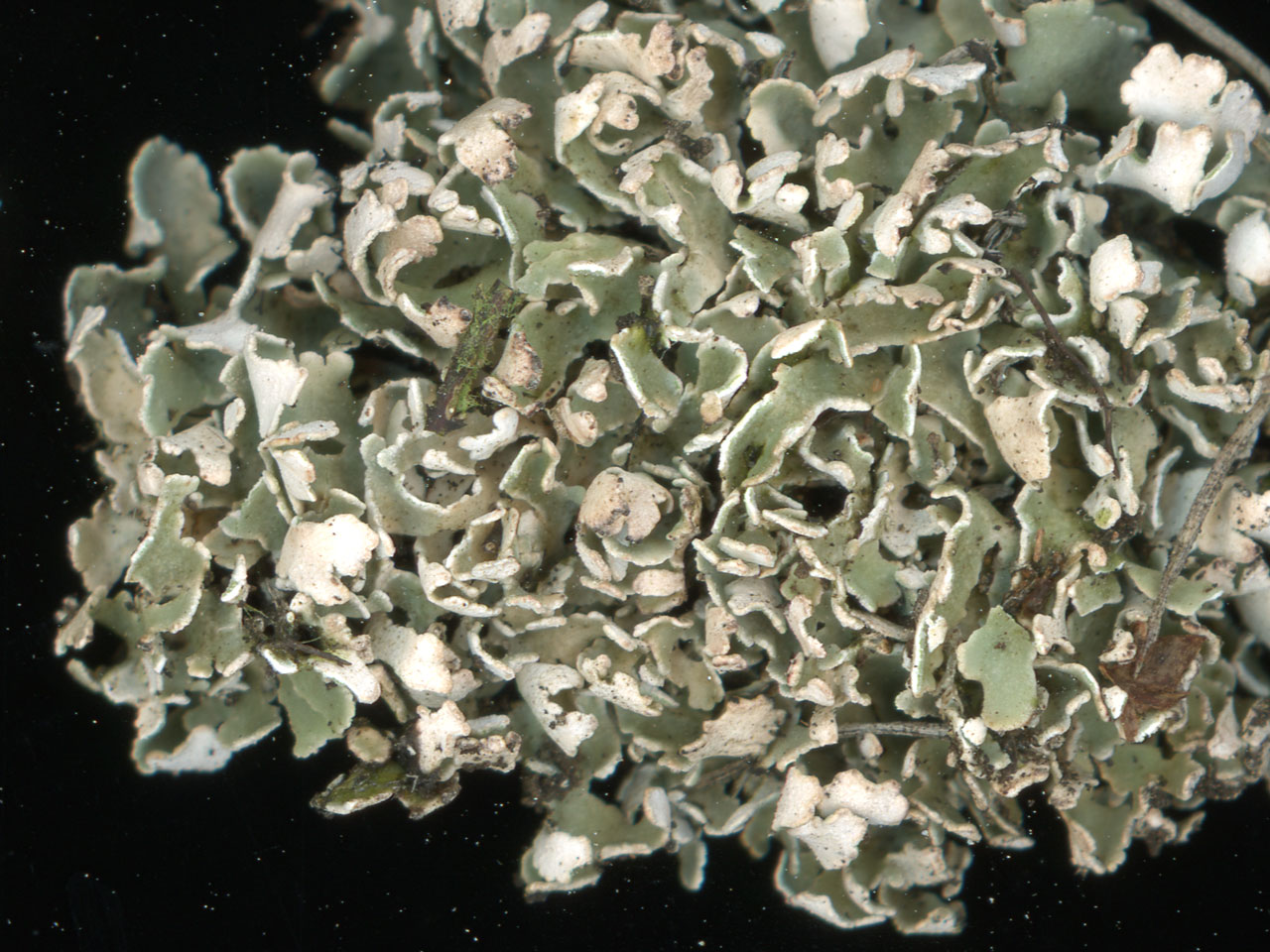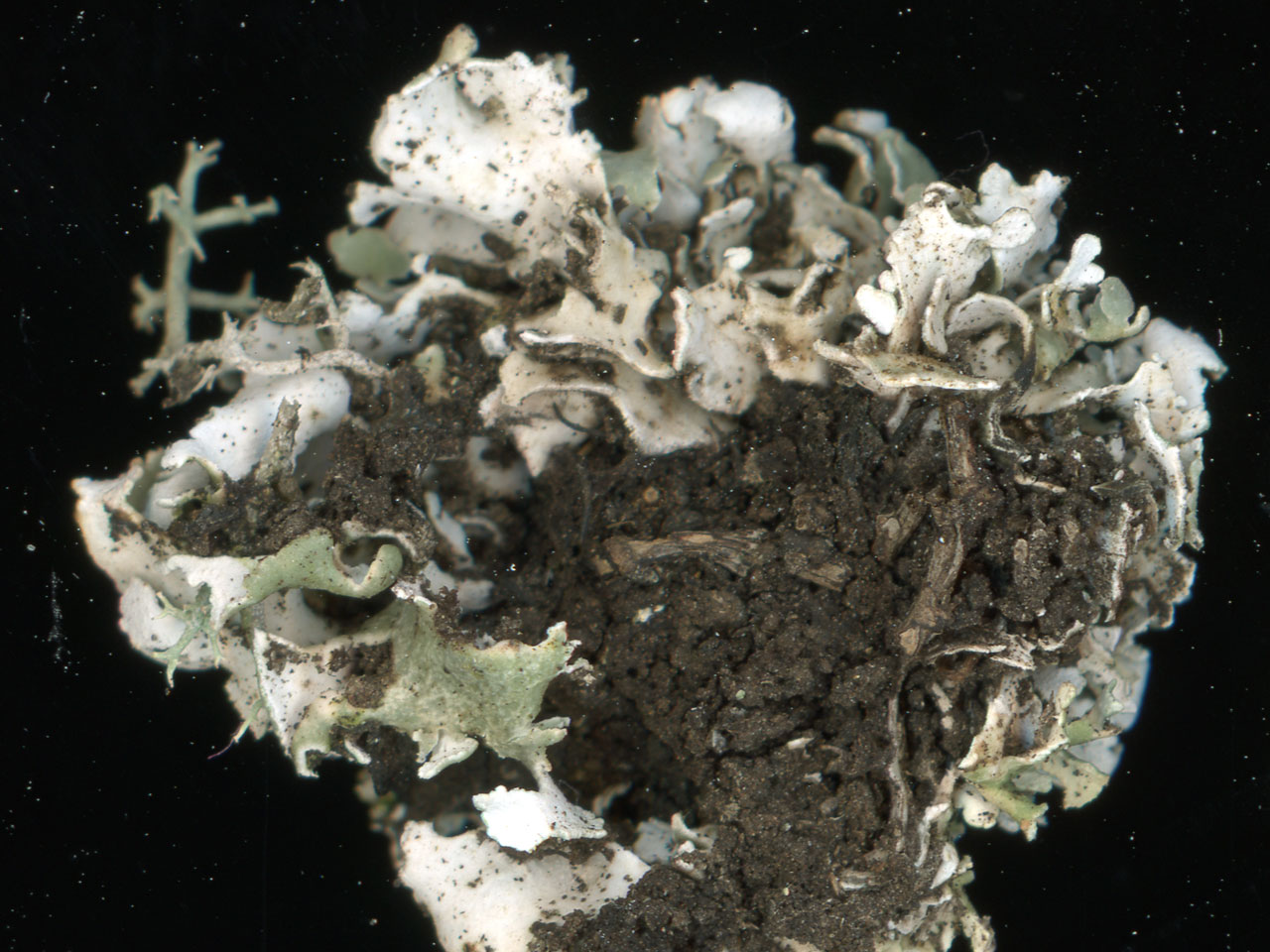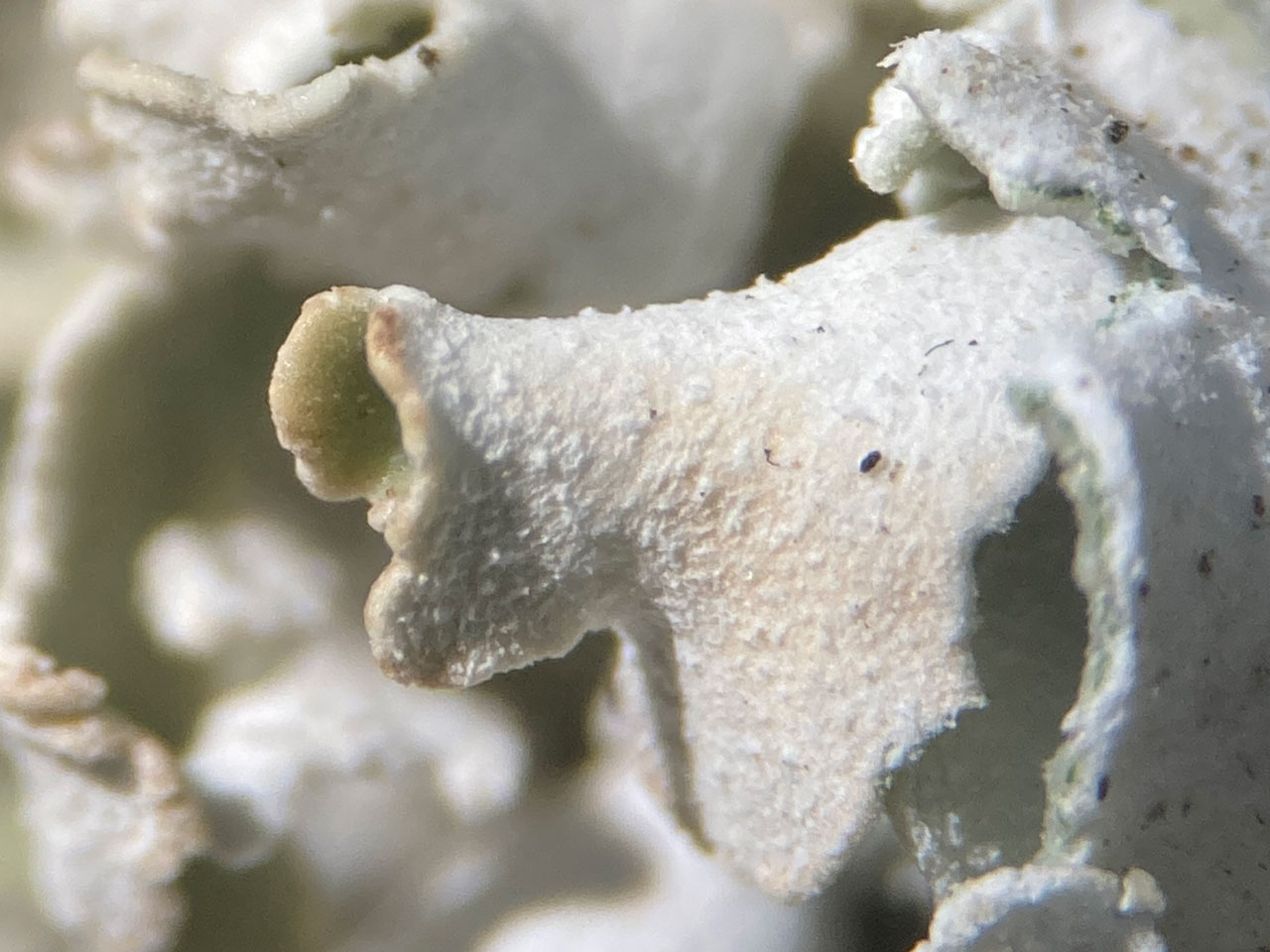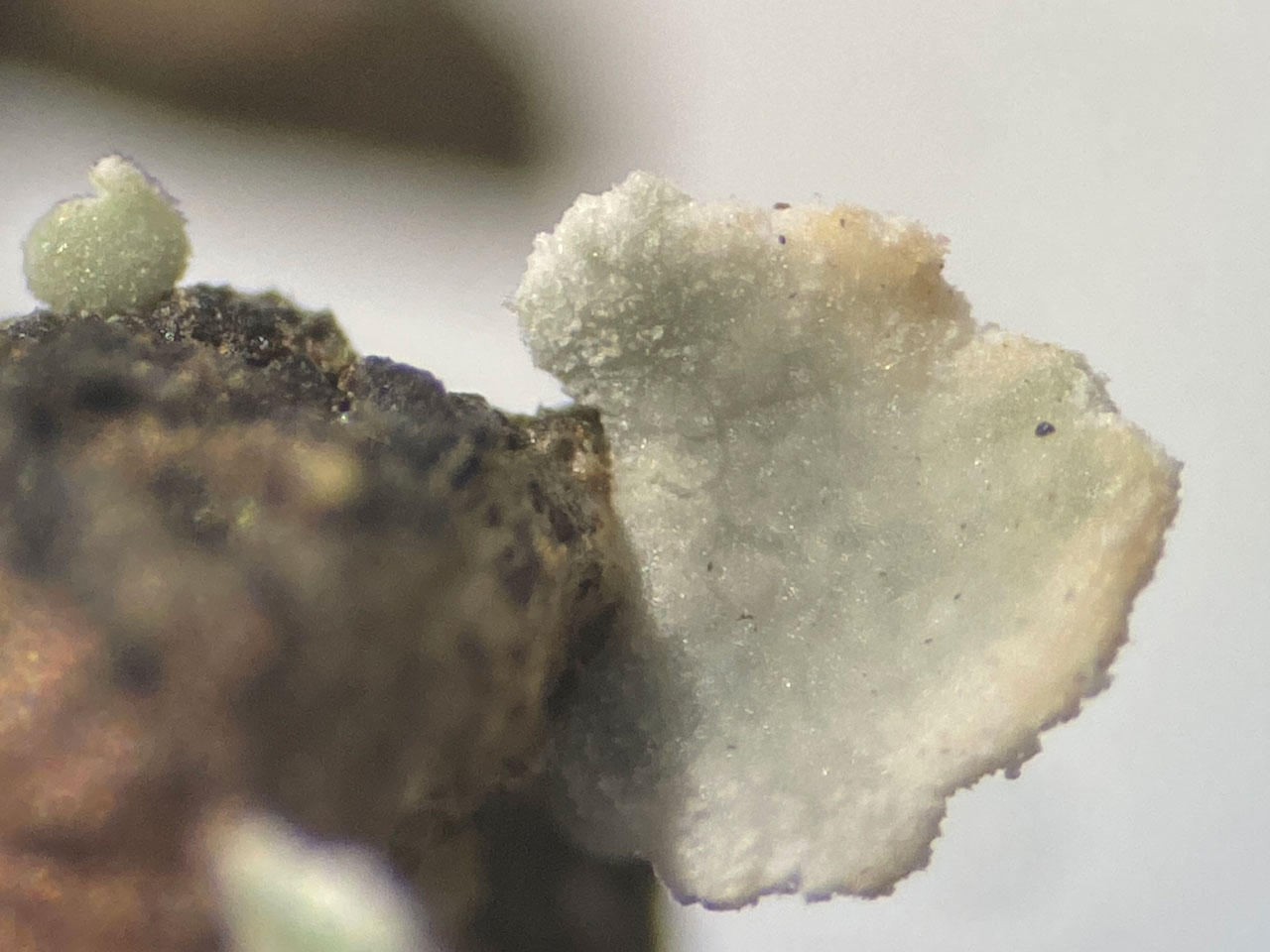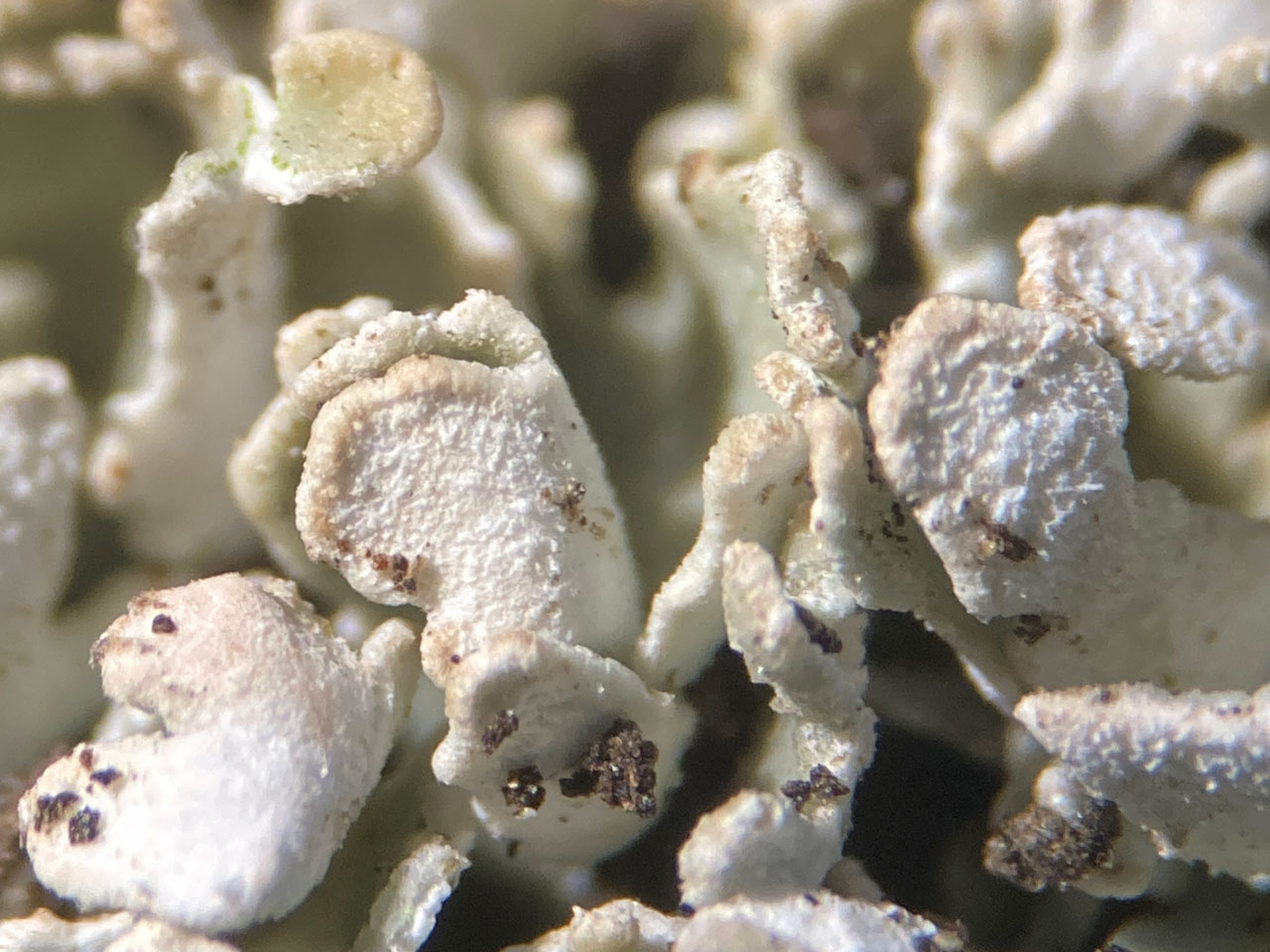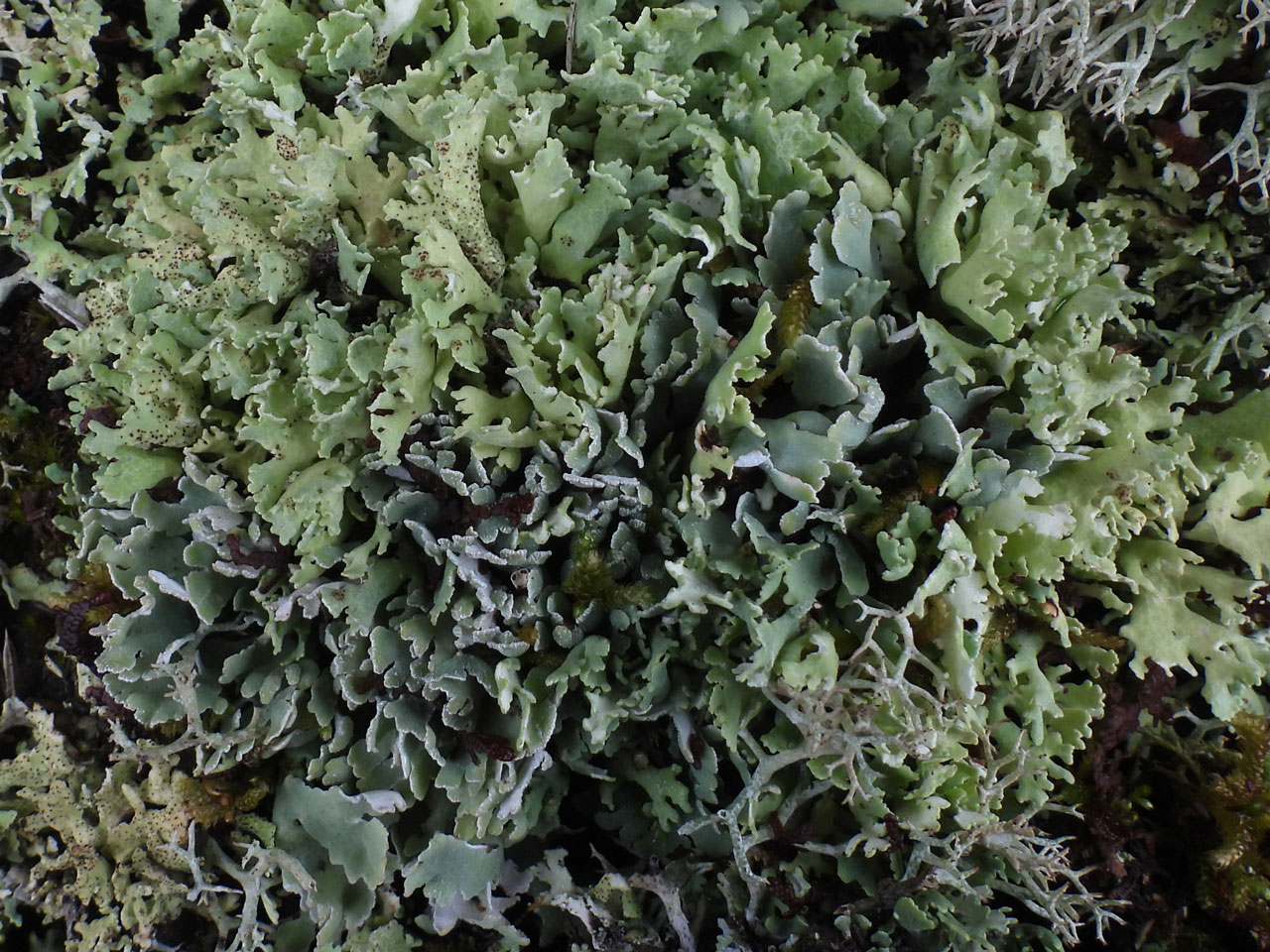A rare, normally sterile, Cladonia forming squamule mats in open vegetation on calcareous soils from the coast to montane habitats. Has been characterised in Britain by a K+ yellow to red spot test (norstictic acid and atranorin), although many other chemotypes occur elsewhere and in 2023, a K+ yellow, Pd+ orange-red chemotype was confirmed from The Lizard. The species should be identified by morphology not spot tests, although all chemotypes have either K+ yellow to red or K+ yellow spot tests. The upper surface of the squamules is pale grey-green but often brownish at the apices, with the lower surface starkly white, with edges sometimes darkened with violet tones. The distribution is centred on the Mendips and Scottish Highlands and the lichen is very scattered elsewhere, however, potentially K+ yellow chemotypes have been mis-identified as Cladonia firma.
Podetia very rare, small, to 1 cm tall, blunt, ± continuously corticate, sometimes furrowed. Basal squamules dominant, to 10 mm long, scattered to contiguous, ± horizontally spreading, sometime narrow and elogate, with recurved margins when dry; upper surface pale grey-green, brownish at the apices, often pruinose; lower surface starkly white, with the upper edges darkened with violet tones, weekly tomentose giving a flocked effect. Apothecia brown, rare. Pycnidia dark brown-black, frequent on basal squamules. Thallus C–, K+ yellow→red, KC–, Pd+ yellow, UV– (norstictic acid and atranorin). Six other chemotypes occur elsewhere, only four reacting K+ yellow→red and the others being K+ yellow. Specimens reacting K+ yellow can be expected and the K+ yellow→red spot test should not be relied on at all. (K+ yellow material has now been confirmed from Britain, see note below)
Easily overlooked in the absence of podetia, this calcicole is distinguished from usually browner C. cervicornis and C. pocillum by the K+ yellow→red or K+ yellow spot tests and the occurrence of pycnidia on the basal squamules. Cladonia cariosa is similar but differs from it by having a thinner thallus, lacking brown tips to the squamules and more fissured podetia, it is also usually abundantly fertile and grows on less base rich soils. In base-rich montane habitats, isolated basal squamules could be confused with Psora rubiformis, which is K–.
A specimen Coll. N A Sanderson, on limestone soil, CG1 by the coast, Broad Haven, Stackpole, VC45, SR980 942, 31/8/1995, K+ yellow, K/UV (dry)+ bright neon yellow and Pd+ orange-red, was determined by Peter James as Cladonia firma, but has largely white squamule undersides and other typical features of C. symphycarpa. Similar more generous specimens were found coastal serpentine heath, Lizard, W. Cornwall in 2023 with similar reactions. A comparison with typical K+ yellow→red C. symphycarpa and with Cladonia firma specimens (the latter's presence at that location confirmed previously by sequencing) indicated the Lizard specimens were not C. firma but probably another chemotype of C. symphycarpa. The spot tests match chemotype V of Burgaz et al (2019) (Atranorin, fumarprotocetraric and rangiformic acids, and zeorin (inconstant)). As Burgaz et al (2019) and Association Française de Lichénologie describe C. firma as preferring substrates with an acid or subneutral pH and non-calcarious soils, it is possible that K+ yellow & Pd+ orange-red C. symphycarpa has been collected in Britain previously from coastal limestone, calcareous dunes and heavily salt influenced coastal grassland but misidentified as C. firma. At the Lizard heaths, true C. firma did occur, but further inland on more acidic heaths (Sanderson, 2024). C. firma has darker brown (dry) to darker green (wet) squamules which are less lanceolate, with the undersides strongly grey-brown at the base and more strongly tomentose.
On calcareous soil on coastal limestone, serpentine heath, basic dune systems, Xerobromion grassland on south facing limestone slopes and montane calcareous metamorphic rocks. Possibly occurring also as a norstictic acid deficient form in high pH salt influenced coastal grassland on more acidic substates.

Rare, centred on S.W. England (Mendips) and Scottish Highlands, very scattered elsewhere in southern England (Dorset, N. Hampshire, Isles of Scilly, Cornwall) and in S.W. Wales
The lowland coastal and limestone grassland populations vulnerable to loss from vegetation over growth caused by declining grazing pressure; possibly this lichen would be better assessed as Near Threatened.
Britain: Notable
Wales: Data Deficient
Scotland: Priority Taxon for Biodiversity in Scotland
Burgaz, A.R., Ahti, T. & Pino-Bodas, R. (2020) Mediterranean Cladoniaceae. Madrid: Spanish Lichen Society.
Pino-Bodas, R., Sanderson, N., Cannon, P., Aptroot, A., Coppins, B., Orange, A. & Simkin, J. (2021). Lecanorales: Cladoniaceae, including the genera Cladonia, Pilophorus and Pycnothelia. Revisions of British and Irish Lichens 19: 1-45. Link
Sanderson, N. A. (2024) Lichen Survey for Lizard SRP Project, 2024, Final Report. A Botanical Survey & Assessment report to English Nature.
Text by Neil A Sanderson, based Pino-Bodas et al (2021)


